Explore Tsukuba - Japan Travel, Asia
Welcome to Tsukuba, a city that seamlessly blends innovation with tradition. Nestled in the heart of Ibaraki Prefecture, Japan, Tsukuba is renowned for its cutting-edge research and technological advancements. Yet, it also offers rich cultural experiences and natural beauty. Whether you're a tech enthusiast, a history buff, or simply seeking a unique travel destination, Tsukuba has something for everyone. Let's explore the charms of this fascinating city and discover why it should be on your travel radar.
Craving an exceptional Japan adventure? Explore our handpicked premium tours here for the ultimate experience.
Population: Approximately 256,000 in 2024.
Economy: Tsukuba, the seat of scientific advancement in Japan and the largest rice field in Ibaraki Prefecture, is evidence that traditions may thrive with technology.
Landmarks: Famous for the Tsukuba Space Center, Mount Tsukuba, and Tsukuba Expo Center.
Japan
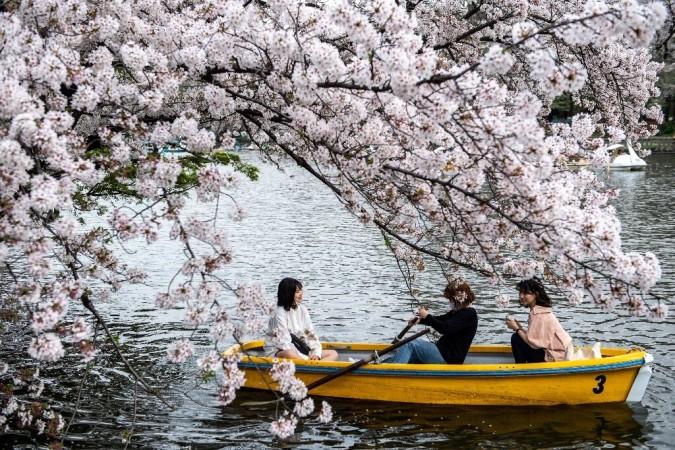
Overview of Tsukuba
History & Culture Influence
Tsukuba's history is a captivating tale of evolution, from ancient settlements to a modern city known for science and technology. The region has been inhabited for thousands of years, with evidence of early Jomon culture found in local archaeological sites. However, Tsukuba's cultural renaissance began in the 1960s when it was designated as Japan’s Science City. This initiative brought together researchers and institutions, making Tsukuba a center for innovation and academic excellence. Today, Tsukuba's culture is a harmonious blend of the old and new with the dedication to preserving its heritage by presenting historical and cultural items in its numerous museums for visitors around the world to see.
Interaction with The Locals
Tsukuba, located in Ibaraki Prefecture, Japan, is home to a diverse and vibrant population of approximately 256,000 residents. The city is known for its strong academic and scientific community, with many citizens working in research and technology sectors due to the presence of Tsukuba Science City. The population includes a mix of locals and international residents, contributing to a multicultural environment. The people of Tsukuba are known for their friendliness and openness, often engaging in community activities and cultural events that reflect the city's rich heritage and innovative spirit.
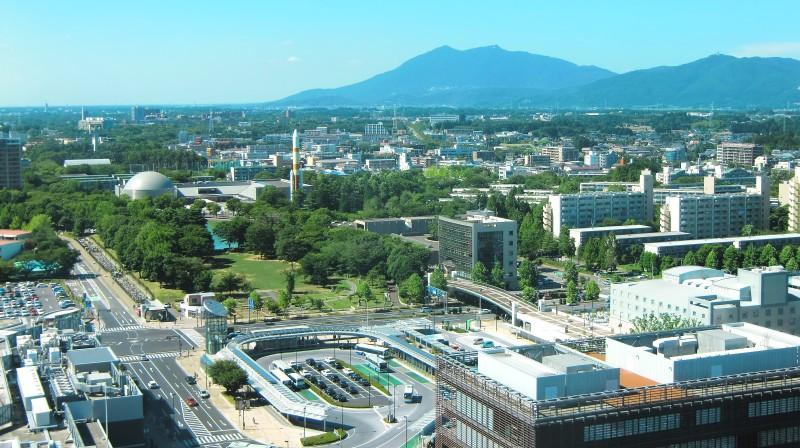
Tsukuba Science city - © Wikimedia
Top Attractions in Tsukuba
These attractions reflect Tsukuba’s rich offerings in science, nature, and culture, making it an appealing destination for travelers seeking a blend of innovation and natural beauty.
Tsukuba Space Center
Operated by JAXA (Japan Aerospace Exploration Agency), the Tsukuba Space Center is a must-visit for space enthusiasts. It includes spacecraft and satellite replicas as well as interactive exhibits on Japan's space adventures. Visitors can enjoy immersive displays and watch live broadcasts from the International Space Station, providing an exciting glimpse into the world of space exploration.
Mount Tsukuba
One of Japan's "100 Famous Mountains," Mount Tsukuba is well-known for its gorgeous hiking paths and expansive vistas.The mountain offers paths suited for all levels of hikers, with trails leading to the summit where you can enjoy breathtaking vistas of the surrounding landscape. At the base, you’ll find the historic Tsukuba Shrine, a spiritual site with deep cultural significance.
Tsukuba Expo Center
Ideal for families and science enthusiasts, the Tsukuba Expo Center features a range of interactive exhibits focused on science and technology. Highlights include hands-on activities, educational displays, and a planetarium that offers captivating shows about the cosmos. All ages may have an interesting and instructive experience at the facility.
Tsukuba Botanical Garden
The Tsukuba Botanical Garden is a tranquil haven for nature lovers, showcasing a diverse array of plant species from around the world. Visitors can stroll through beautifully landscaped gardens, explore themed plant collections, and enjoy seasonal flower displays. The garden serves as a peaceful retreat from the city and offers a chance to connect with nature.
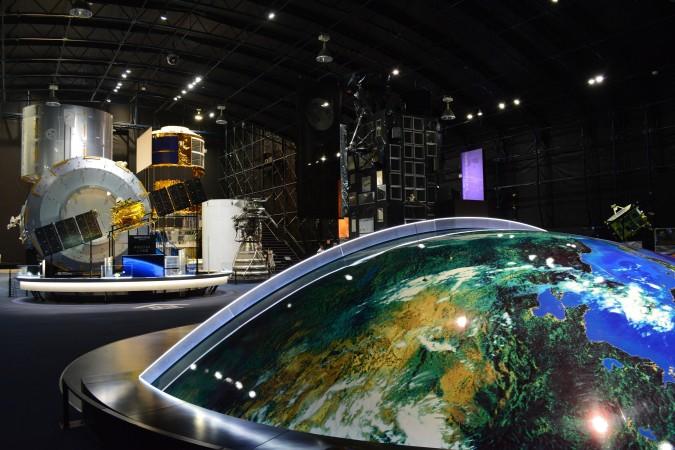
Tsukuba Space Center - © JAXA
Must-Try Dishes in Tsukuba
Tsukuba’s cuisine is a delightful reflection of its rich cultural heritage and innovative spirit. Whether you’re a food aficionado or just looking to savor local flavors, Tsukuba offers a range of dishes that will tantalize your taste buds.
- Tsukuba-style Udon: Tsukuba-style udon is a hearty and comforting dish, known for its thick, chewy noodles served in a rich, savory broth. This neighborhood staple captures the spirit of classic Japanese comfort cuisine and is frequently topped with tempura, green onions, and a soft-boiled egg.
- Tsukuba Koi Sushi: Utilizing fresh, locally-sourced ingredients, Tsukuba koi sushi features a variety of sushi made with premium koi fish. For fans of sushi, its exquisite tastes and presentation are a must-try.
- Kakiage Tempura: A specialty of Tsukuba, kakiage tempura consists of mixed vegetables and seafood, all battered and deep-fried to crispy perfection. It’s commonly served over rice or as a topping for udon, providing a delicious crunch in every bite.
- Tsukuba Yuba (Tofu Skin): Famous for its yuba, a delicacy formed from the thin skin that develops on the top of cooked tofu, Tsukuba is known for its culinary skills. This versatile ingredient can be enjoyed in various forms, including fresh, dried, or as part of soups and salads.
- Local Sake: Tsukuba’s proximity to fertile rice fields makes it an excellent place to enjoy local sake. Many small breweries in the area produce high-quality sake with distinct flavors, offering a perfect pairing for traditional Japanese dishes.
Looking for more adventures? Dive into Fukui-Shi, another famous destination in Japan, with our article here.
Shopping in Tsukuba
Tsukuba’s shopping options offer a mix of modern retail experiences and traditional markets, catering to all tastes and preferences.
- Tsukuba City Center: The city center features a variety of shops, from international brands to local boutiques. Explore shopping malls like Tsukuba EXPO '85 Memorial Park, where you can find everything from fashion and electronics to souvenirs.
- Local Markets: Visit local markets such as Tsukuba Farmers' Market for fresh produce, artisanal goods, and local delicacies. These markets provide a taste of Tsukuba’s local flavors and offer unique shopping experiences.
- Specialty Stores: Discover specialty stores selling traditional Japanese crafts, including pottery, textiles, and handmade accessories. These stores offer a chance to purchase unique souvenirs that reflect Tsukuba’s cultural heritage.

Kakiage Tempura - © The Spruce Eats
Festivals & Local Celebrations
Tsukuba's vibrant festivals and local celebrations offer an immersive experience into the city's cultural life. These events provide a fantastic opportunity for visitors to enjoy traditional activities and connect with the local community.
Tsukuba Matsuri
Held annually in August, Tsukuba Matsuri is a lively festival featuring colorful parades, traditional music, and dance performances. The event is a celebration of local culture, with street vendors offering a variety of traditional foods and crafts.
Tsukuba International Science Festival
This event takes place every spring and showcases Tsukuba’s reputation as a hub for scientific innovation. The festival features interactive exhibits, hands-on experiments, and lectures by renowned scientists, making it an exciting event for science enthusiasts.
Tsukuba Sakura Festival
Celebrated during cherry blossom season, the Tsukuba Sakura Festival is a picturesque event where visitors can enjoy hanami (flower viewing) under blooming cherry trees. The festival includes cultural performances, food stalls, and art displays, creating a festive atmosphere amid the beautiful spring scenery.
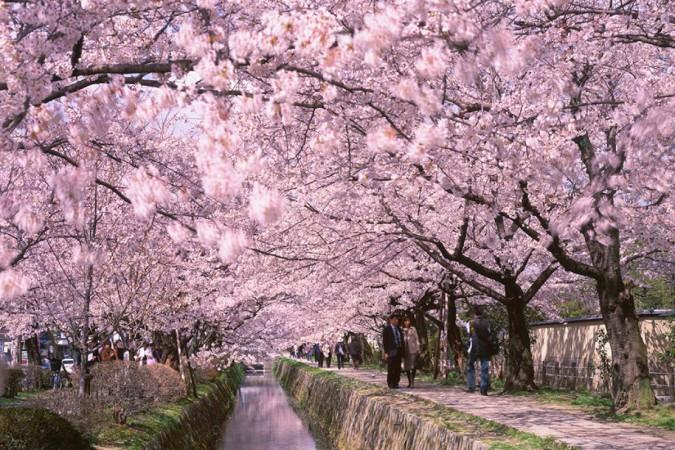
Tsukuba Cherry Blossom Festival - © Japan Tourism
What to Do in Tsukuba
Tsukuba offers a diverse range of activities and experiences for tourists, blending modern attractions with traditional charm. Travelers seeking adventure or discovery can find something to suit their interests in Tsukuba, whether it is science, nature, traditional crafts, or local culture.
- Explore the Tsukuba Space Center: Dive into Japan's space exploration history at the Tsukuba Space Center. Learn about the newest space missions and technology by exploring interactive exhibitions. The center offers fascinating insights into the workings of space science and Japan's role in international space exploration.
- Hike Mount Tsukuba: Mount Tsukuba trekking is a must for nature lovers. With breathtaking views of the surrounding mountains and the Kanto Plain, this famous summit provides picturesque pathways. There are well-maintained routes that lead to the peak and the viewing spots, making the trek appropriate for hikers of all ability levels.
- Discover Tsukuba’s Traditional Crafts: Tsukuba is known for its traditional crafts, including pottery and textiles. Visit local workshops and galleries to see artisans at work and purchase unique handcrafted souvenirs. Engaging with local craftsmen provides a deeper understanding of Tsukuba's cultural heritage.
- Enjoy the Tsukuba Botanical Garden: The Tsukuba Botanical Garden is a serene retreat showcasing a variety of plant species. Stroll through themed gardens, including traditional Japanese, tropical, and aquatic sections. It's a peaceful place for nature lovers and those looking to relax amid beautiful floral displays.
- Onsen Retreat: Enjoy a traditional Japanese hot spring experience at nearby onsen resorts. Relax in natural hot spring baths while taking in picturesque views. Tsukuba’s onsen offers a soothing retreat and an authentic taste of Japanese relaxation practices.
- Explore the Tsukuba International Science City: Visit the Tsukuba International Science City, a hub of research and development. The city features cutting-edge technology and research facilities, and guided tours can provide insight into the latest scientific advancements and innovations.

Onsen Retreat in Tsukuba - © Japan Tourism
Weather in Tsukuba: Best Time to Visit
There are several seasons in Tsukuba, and each one presents special travel opportunities. Here's what to anticipate all year long:
Spring in Tsukuba
- Weather: Spring in Tsukuba is characterized by mild temperatures ranging from 10°C to 20°C (50°F to 68°F) and occasional rain showers. There are beautiful sceneries created by the full bloom of cherry blossoms.
- Tourism Trend: Spring is a popular time for visitors due to the cherry blossom season. The Tsukuba Sakura Festival attracts tourists who come to enjoy hanami (flower viewing) and participate in cultural events. It’s also an excellent time for outdoor activities and exploring the city's parks and gardens.
Summer in Tsukuba
- Weather: Summer temperatures in Tsukuba often exceed 30°C (86°F) with high humidity and frequent thunderstorms. This is when the temperatures get the hottest.
- Tourism Trend: Despite the heat, summer remains vibrant with numerous festivals such as Tsukuba Matsuri, featuring parades and traditional performances. Visitors may take part in outdoor activities in the cooler early morning or late evening hours. Water-related activities and evening strolls in the city’s parks are popular.
Autumn in Tsukuba
- Weather: Autumn brings with it mainly dry weather and colder temperatures, ranging from 10°C to 20°C (50°F to 68°F). There are many exciting outdoor things to do when the leaves are changing.
- Tourism Trend: This season is favored for its comfortable weather and beautiful autumn leaves. Visitors flock to Mount Tsukuba and local parks to experience the vibrant fall colors. Autumn is also ideal for hiking and exploring the city’s natural beauty without the intense heat of summer.
Winter in Tsukuba
- Weather: Winters in Tsukuba are mild, with temperatures ranging from 0°C to 10°C (32°F to 50°F). There's hardly much snow, but the air is dry and crisp.
- Tourism Trend: Winter is a quieter time for tourism, but it offers a peaceful escape. It's a perfect opportunity to take in the calm ambiance of the city and explore museums and other cultural attractions. Visitors can also experience seasonal events and warm up with local cuisine.
Want to know about Okayama? Check out our insights here and see why it's worth a visit.
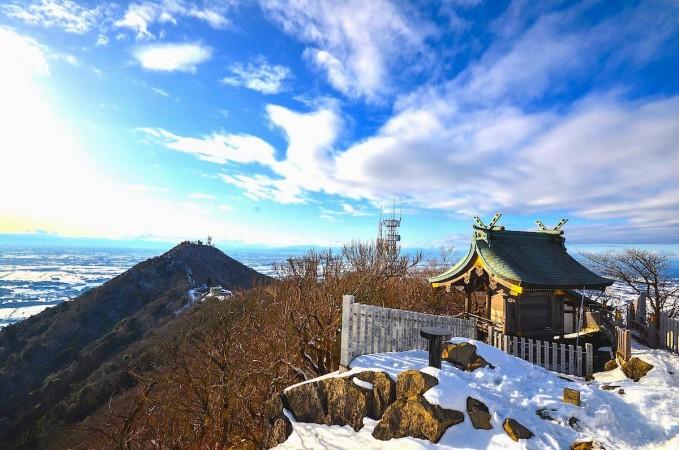
Winter in Tsukuba - © Japan Tourism
Essential Travel Information
Getting Around Tsukuba
Tsukuba has a variety of transportation alternatives to meet diverse demands, making travel across the city easy.
- Train Line: Tsukuba Express rapid transit line connects Tsukuba with Tokyo, making it easy to travel between the two cities. The Tsukuba Express Station is centrally located and offers direct access to major attractions.
- Local Buses: Tsukuba has an extensive bus network that serves the city and surrounding areas. Buses are well-coordinated with train schedules and provide access to popular destinations.
- Cycling and Walking: Cycling is an excellent way to explore the city’s attractions at a leisurely pace. Additionally, many of Tsukuba’s key sites are accessible on foot, making walking a convenient option.
- Taxis: Taxis are readily available throughout Tsukuba. They are a convenient choice for traveling to specific locations or when public transportation is not available. Be sure to have your destination written in Japanese or use a GPS-enabled app.
- Car Rentals: For more flexibility, consider renting a car. Tsukuba is well-connected by major roads, and having a car allows you to explore the surrounding countryside and nearby attractions at your own pace.
ATM & Banking Services
Managing your finances in Tsukuba is straightforward with a variety of banking and ATM services available. ATMs are conveniently located throughout the city, including at convenience stores, major banks, and shopping centers, and many accept international credit and debit cards. Currency exchange services can be found at banks and major hotels, with better rates often available at international airports or dedicated currency exchange offices. For more extensive banking needs, local branches offer services such as cash withdrawals, deposits, and financial consultations. Credit cards are widely accepted in larger establishments, restaurants, and hotels, but it’s a good idea to carry some cash for smaller shops and markets.
Where to Stay in Tsukuba
Tsukuba offers a variety of accommodation options to suit different preferences and budgets, ensuring a comfortable stay for every traveler.
- Hotels: Tsukuba has a diverse selection of hotels, from luxury options to more budget-friendly choices. These establishments offer modern amenities and convenient locations, catering to different needs and preferences. Whether you’re looking for high-end comfort or practical convenience, there’s a hotel in Tsukuba to match your requirements.
- Traditional Japanese Inns (Ryokan): For a taste of traditional Japanese hospitality, consider staying at a ryokan. These inns provide a unique experience with features such as tatami mat flooring, futon bedding, and traditional meals. Staying at a ryokan allows you to immerse yourself in Japanese culture and enjoy a more authentic accommodation experience.
- Guesthouses and Hostels: Budget travelers will find a variety of guesthouses and hostels throughout Tsukuba. Guesthouses often provide a homely atmosphere, while hostels cater to those seeking a communal environment.
Articles for you

Explore Yala National Park - Sri Lanka Travel, Asia
Tucked away in Sri Lanka’s southeastern corner, Yala National Park is where wild nature meets deep tradition. Known worldwide for its leopard population, the park is also home to elephants, sloth bears, crocodiles, and hundreds of bird species. Beyond wildlife, Yala opens doors to a cultural landscape dotted with ancient temples, Buddhist ruins, and coastal villages. For travelers seeking more than just a safari, Yala offers a chance to explore eco-tourism, local communities, and sacred heritage sites.
Population: The Yala National Park area doesn’t have a human population.
Economy: The economy around Yala National Park thrives on a blend of eco-tourism, agriculture, and local services. Safari tours, eco-lodges, and cultural experiences drive steady income for nearby towns like Tissamaharama and Kataragama, supporting thousands of families.
Landmarks: Famous for Block I of Yala and wildlife encounters, including elephants, sloth bears, crocodiles, and exotic bird species.

Explore Galle - Sri Lanka Travel, Asia
Nestled on Sri Lanka’s southern coastline, Galle is a vibrant city where history meets the sea. Its cobbled streets, colonial architecture, and serene beaches make it a must-visit destination for travelers seeking a blend of culture, adventure, and relaxation. A UNESCO World Heritage site, Galle captivates visitors with its Dutch Fort, bustling markets, and friendly locals. Whether you’re exploring the ramparts at sunset or savoring fresh seafood by the shore, Galle promises an unforgettable journey into Sri Lanka’s heritage.
Population: Approximately 113,000 in 2023.
Economy: Galle’s economy thrives on tourism, trade, and fisheries. The city’s historic fort, colonial architecture, and coastal charm draw thousands of international visitors each year, making tourism its main economic driver. Fishing remains vital for local livelihoods, supplying fresh seafood across the region.
Landmarks: Famous for the Galle Fort, Dutch Reformed Church & Maritime Museum, and Unawatuna Beach.

Explore Bentota - Sri Lanka Travel, Asia
Nestled along Sri Lanka’s southwestern coast, Bentota is a tropical paradise that blends golden beaches, vibrant culture, and thrilling adventures. Famous for its calm waters, luxury resorts, and scenic river estuary, Bentota has become a top destination for travelers seeking both relaxation and authentic experiences. From serene beach walks at sunrise to adrenaline-pumping water sports, this coastal town offers a perfect balance of leisure and exploration. With its proximity to Colombo and Galle, Bentota is easy to reach, making it an ideal stop for both short escapes and extended holidays.
Population: Approximately 37,000 in 2023.
Economy: Bentota’s economy thrives mainly on tourism, which drives local businesses such as hotels, restaurants, and wellness retreats. The town also benefits from fishing, coconut cultivation, and handicrafts like wood carving and batik textiles. Many residents rely on the growing demand for water sports and Ayurvedic treatments, making tourism the backbone of both income and employment in the area.
Landmarks: Famous for Bentota Beach, Bentota River Safari, and Kande Vihara Temple.

Explore Mirissa - Sri Lanka Travel, Asia
Mirissa is a charming coastal town on Sri Lanka’s southern shoreline. Known for its golden beaches, turquoise waters, and vibrant marine life, it has become a must-visit stop for travelers exploring the island. Many come for whale watching, surfing, and sunset views at Coconut Tree Hill, but Mirissa offers much more than postcard beauty. The fishing boats you see anchored by the bay carry generations of stories. Local traditions, delicious cuisine, and a laid-back rhythm of life shape every visitor’s experience.
Population: Approximately 4,700 in 2023.
Economy: Mirissa’s economy is largely shaped by its coastal location. Fishing has long been the backbone of local livelihoods, with generations relying on the Indian Ocean for income. In recent decades, tourism has become the main driver of growth, thanks to whale watching, surfing, and beachside hospitality.
Landmarks: Famous for Mirissa Beach, Coconut Tree Hill, and Parrot Rock Bridge.

Explore Nuwara Eliya - Sri Lanka Travel, Asia
Tucked away in the Central Highlands of Sri Lanka, Nuwara Eliya is often called “Little England”. With its rolling tea plantations, cool misty mornings, and colonial charm, this mountain town feels like a step into another world. Travelers come here to breathe fresh air, walk through flower gardens, sip the finest Ceylon Tea, and enjoy a pace of life far from the island’s busy cities. Whether you’re drawn by scenic landscapes, heritage architecture, or the warmth of its people, Nuwara Eliya is a destination that blends nature, culture, and history in perfect harmony.
Population: Approximately 781,000 in 2023.
Economy: Nuwara Eliya’s economy thrives mainly on tea production, as it sits in the heart of Sri Lanka’s central highlands, famous worldwide for Ceylon Tea. The city also benefits from a growing tourism industry, attracting visitors with its colonial charm, cool climate, and scenic landscapes.
Landmarks: Famous for Gregory Lake, Hakgala Botanical Garden, and Victoria Park.

Explore Sukau - Malaysia Travel, Asia
Nestled on the banks of the Kinabatangan River in Sabah, Malaysian Borneo, Sukau is a destination where wildlife, culture, and conservation come together. Known as one of Asia’s top spots for river safaris and eco-tourism, this quiet village offers a front-row seat to encounters with Bornean orangutans, pygmy elephants, proboscis monkeys, and exotic birdlife.
Population: Approximately 1,400 in 2019.
Economy: Sukau’s economy is shaped by its riverine location and natural resources. Traditionally, the Orang Sungai community relied on fishing, small-scale farming, and forest gathering for their livelihood. Today, the village has shifted toward eco-tourism, with river cruises, jungle trekking, and homestays providing income.
Landmarks: Famous for the Kinabatangan River cruises, Gomantong Caves, and Ox-bow lakes and wetlands.
